Lėlės sąnariukus analizavome ankstesnėje temoje, šioje pakalbėsime apie pačią pagrindinę sąnarėlių konstrukciją - RUTULIUKUS. Aptarsiu medžiagas, iš kurių juos galima pasigaminti, gamybos būdus ir kai kuriuos triukus.
The joint samples and forms you already seen in the previous theme. On this one I'll talk about the basic joint structure - BALLS. I will dispute materials from which they can be made, techniques and some tricks.
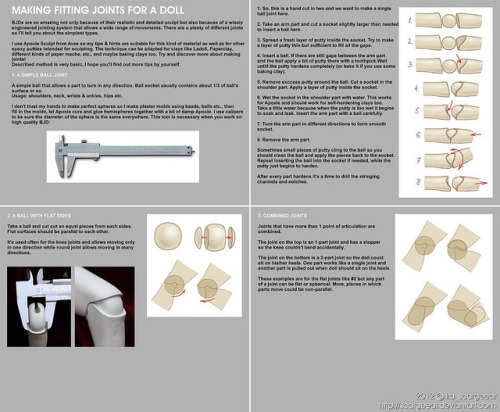 |
| http://ekricenaite.tumblr.com/ |
Šie rutuliukai atlieka labai svarbią fukciją šarnyrinės lėlės gamyboje. Būtent jie užtikrina lėlės stabilumą ir judesius. Patartina naudoti kuo tvirtesnias medžiagas, kadangi jiems tenka pats didžiausias krūvis, tad greičiausiai susidėvi ar būna pažeisti.
Kitas, be abejonės labai svarbus dalykas- šie rutuliukai turi būti idealiai lygūs, kad užtikrintų sklandų judėjimą sąnarių vietose.
These balls have a very important functionality in the production of BJD (Ball-jointed-dolls). They ensure the stability and movements of the doll. It is advisable to use a rigid materials, because they gain the greatest strain. For that reason they wear out firstly or could be easily damaged.
Another, without doubt, a very important thing - these balls have to be perfectly smooth to ensure well-run movements of the joints.
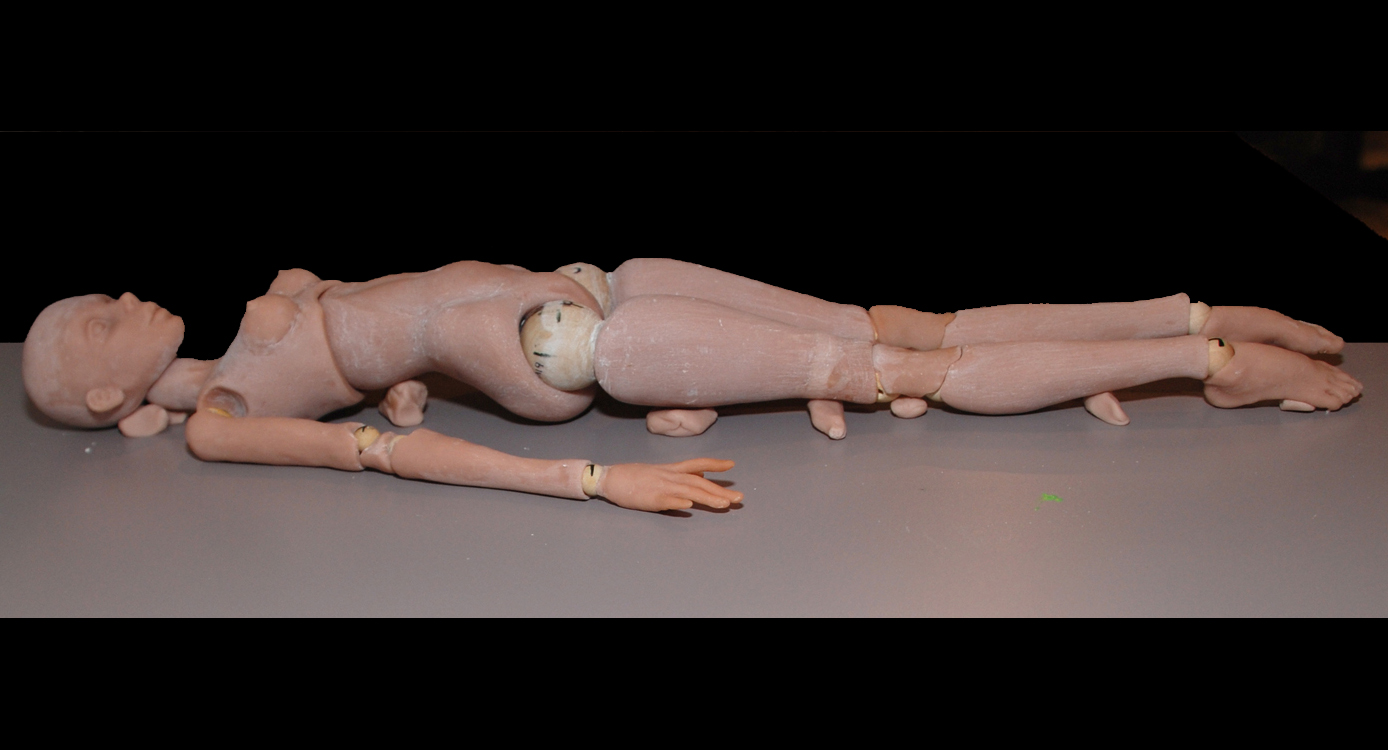 |
| http://cindymcclure.com/2011/02/new-doll/ |
Medžiagos
- Ore džiūstantis modelinas (Premier DOll, La Doll,„Fimo“ air dry ir kt.);
- Kepamas modelinas ("Super sculpey","Cernit",„Fimo“ Oven-hardening ir kt. );
- Epoksidinis molis ("Megic Sculp Resin", "Epoxie Sculpt", "Crystal Clay" ir kt.);
- Sintetinė derva, plastikas (labiau žinoma, kaip resina);
- Naudojamos pagalbinės medžiagos, kaip medis, stiklas, plastikiniai karoliukai ir pan., kurie vėliau bus išimti (kaip matote paveikslėlyje aukščiau).
Materials
- Air-drying clay (Premier Doll, La Doll, "Fimo" air dry "and so on);
- Oven-hardening modelling clay (Super Sculpey, Cernit, "Fimo" Oven-hardening, etc)
- Epoxy clay (Megic Sculp Resin, Epoxy Sculpt, Crystal Clay, and others)
- Resin;
- Support materials such as wood, glass, plastic beads and so on. These will be taken away lately (as you can see in the picture above).
Ore džiūstantis modelinas yra viena iš trapiausių sąrašo medžiagų. Pati jį tokį naudoju. Dažnai siūloma daryti rutuliukus tuščiavidurius, bet šiuo atveju tai netiks. Bet kokiu atveju, jums teks išgręžti reikiamas skylutes ir ertmes, tam, kad galėtumėte įstatyti metalinius kabliukus, strypelius ar tiesiog palikti ertmę elastinei gumai. Mano patarimas į modelino masę įpilkite šiek tiek klijų (popieriui skirtų ar kt.). Viduje ertmes papildomai ištepiau epoksidiniais klijais. Tokiu būdu paruošti jie bus mažiau trapūs.
The Air-drying clay is one of the most vulnerable material in the list. I use it for myself. Often, it is proposed to make balls with hollow inside, but in this case, it won't work. In any case, you will have to drill the necessary holes and cavities, so that you can insert the metal hooks, sticks, or just leave the cavity for an elastic cord. My advice- mix air-drying clay with some glue (for papers, etc..).In addition, paint the inner holes with some epoxy glue.
In this way, they will be less fragile.| http://fairytalesandforgottendreams.webs.com/balljointeddoll.htm |
Oven-hardening modelling clay is much stronger and less fragile. Some artists still use additional materials to reinforce the balls, such as epoxy clay. If, however, you want to remain with this one you have to resolve the only question - how to get a perfectly circle shape? We will talk about a little bit later.
 |
| http://morezmore.com/myblog/2010/01/02/bjd-1/ |
Epoxy clay is an excellent and robust solution. It is easy to use. This material is ideal for modeling the doll's skeleton. However, the top layer should be covered with ordinary material, the air-dry clay or another, or at least painted with body color.
 |
| http://www.facebook.com/photo.php?fbid=527299767280323&set=oa.427493797314326&type=1&theater |
Resin version I won't discuss a lot. This is more Master-class technique. For this way you have to make a molds and fill them with this material. Typically used for whole doll casting, but it can be an idea for those who want to make their own resin (or certain type of plastic) balls.
 |
| http://www.genkigirl.com/sharedimages/goodjoints01.jpg |
As I mentioned above Support materials commonly used in the intermediate stage of doll's production. Typically, these models will be used for mold casting, so lately you can make a doll of resin or even porcelain. Maybe somebody leaves these details for final stage, I don't know, just only covers the body with suitable color. You can choose for your own.
Tuščiaviduris ar pilnas?
Hollow or solid?
Pilnaviduris tai toks, kuriame atsiranda tik tam tikros, kontruktyvinės ertmės. Siūlau taikyti trapesnėms medžiagoms arba mažos apimties detalėms.
Solid I mean is one that has a holes just in certain places, needs for structure. I suggest to use this technique for fragile materials or small size pieces.
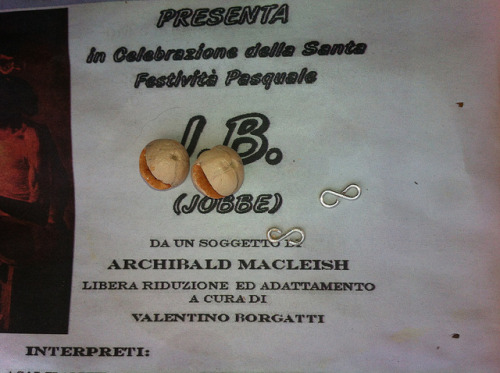 |
| http://ekricenaite.tumblr.com/ |
Šiems rutuliukams gaminti aš siūlau vieną techniką:
- Pirmiausiai susiraskite jums reikalingų dydžių apvalių objektų- karoliukų ir kt.;
- Panaudokite ore džiūstantį modeliną kaip pagindą formai įspausti;
I suggest you one tecnique for making these solid balls of joints:
- First of all, you find some required sizes round-shaped objects- beads and so on;
- Use the air-dry clay as base for simply mold making;
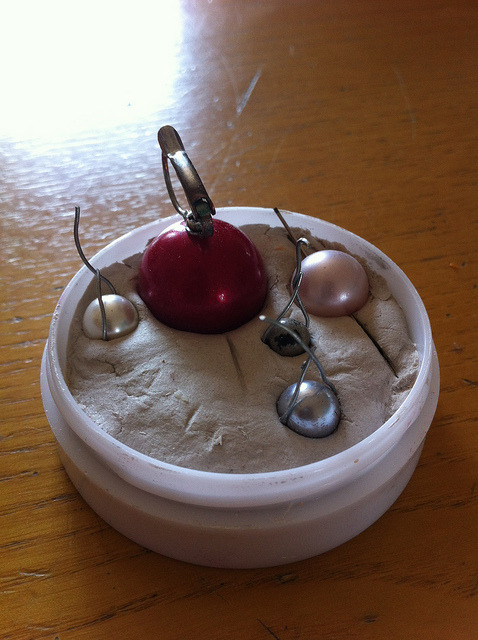 |
| http://ekricenaite.tumblr.com/ |
- Įspaudus palikite džiūti bent parą;
- Leave to dry for at least whole day;
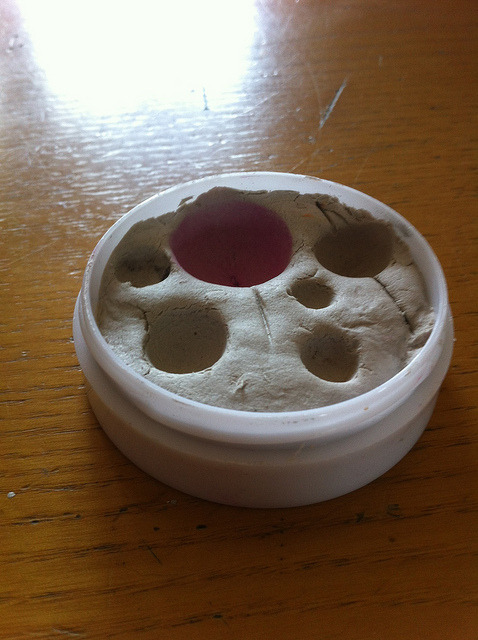 |
| http://ekricenaite.tumblr.com/ |
- Štampą uždenkite maistine plėvele. Ant viršaus galite pradėti formuoti pusapvales molio formas;
- Cover mold with cateringfilm. Now you can begin to form a semicircular pieces of clay;
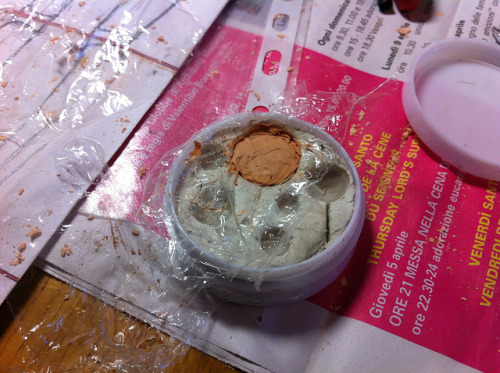 |
| http://ekricenaite.tumblr.com/ |
- Du to paties dydžio pusrutulius sujunkite. Jungtį galite suvilgyti vandeniu, kad geriau priliptų;
- Try to connect the same size of hemispheres. The junction can moisten with water, it will stick better;
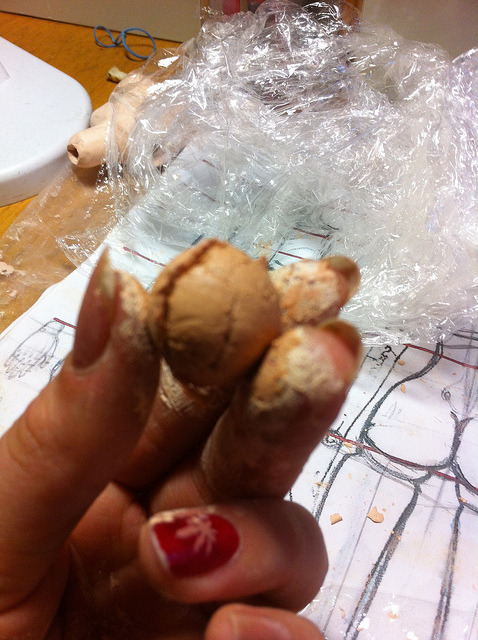 |
| http://ekricenaite.tumblr.com/ |
- Dabar suvilgykite vandeniu visą apskritimo paviršių ir pradėkite ridinėti tarp savo delnų;
- Now moisten with water the whole surface of the circle and start roll with your palms;
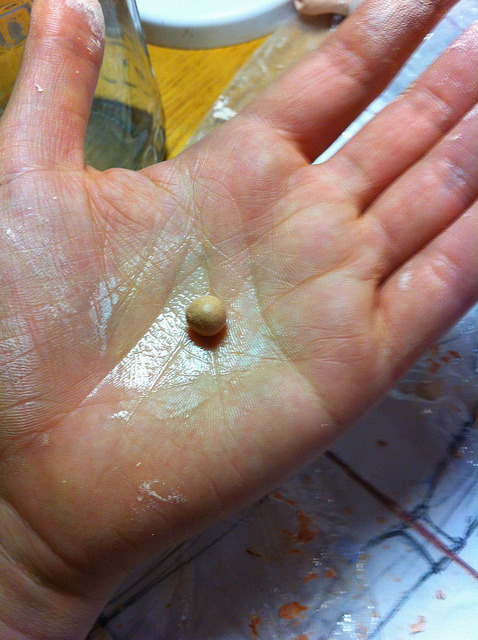 |
| http://ekricenaite.tumblr.com/ |
You should get something similar. Do the same with all of balls as much times as you need.
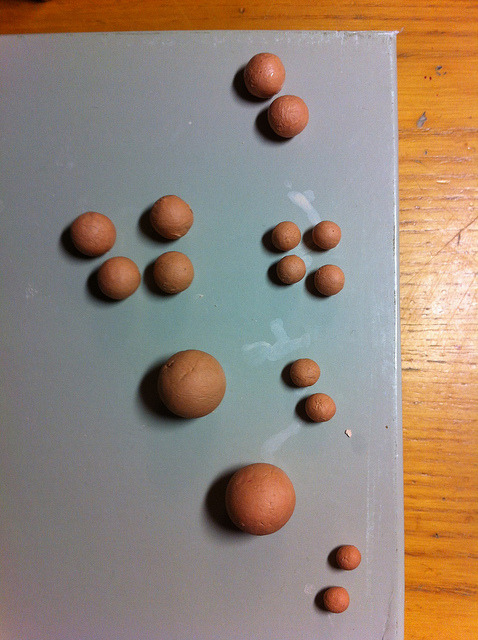 |
| http://ekricenaite.tumblr.com/ |
Tuščiaviduriai rutuliukai gali būti daromi keliais būdais.
Vienas jų yra paprastesnis. Jums tereiks vidinei ertmei užpildyti apvalaus karoliuko ir tokio paties storio išminkyto molio sluoksnio:
The balls with hollows inside
can be made in several ways.
One of them is easier. Your goal is to fill the internal cavity with some round bead and, to make layer with the same thickness of the clay:
 |
| http://ekricenaite.tumblr.com/ |
- Reikės polisterono apskritimų, parduodamų internetu;
- Gipso, arba liejamo silikono formoms;
- Plastelino;
Another method is a bit more complicated and more expensive, but you won't care about perfect circle surface.
- You will need polysterene balls, sold online;
- Plaster or silicone for molds;
- Oil-clay;
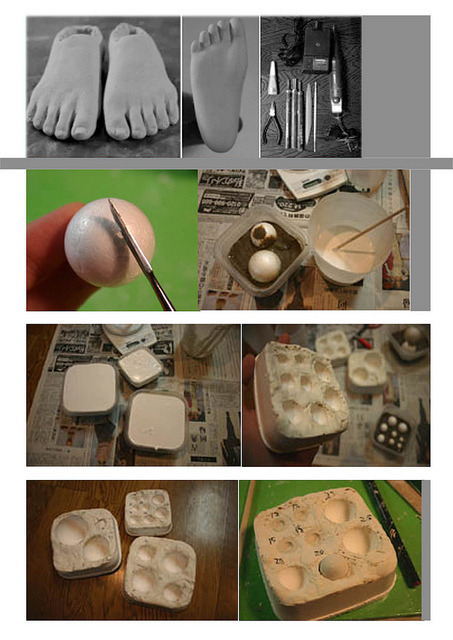 |
| http://www.aimi-doll.com/howto/index.html |
 |
| http://www.aimi-doll.com/howto/index.html |
- Kai formos padaryso, jums vėl gi prireiks vidų užpildančio apskritimo (šiek tiek mažesnio) ir modeliavimui skirtos medžiagos- molio, modelino ar kt.
- As you finished molds, you can start with clay. You'll need same round-shaped ball (slightly smoller) to fill inside.
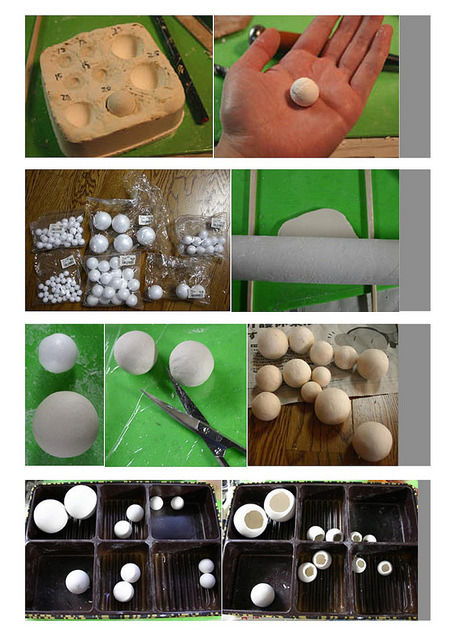 |
| http://www.aimi-doll.com/howto/index.html |
The last thing I want to discuss is the surface of circles. While modeling by hand is not always possible to get a perfectly smooth surface of the circle. There are some solutions:
 |
| http://newclaynews.blogspot.it/2012/09/make-perfect-ball-joints.html |
- Jums reikės liniuotės ,matomos apačioje;
- Suformuokite rutuliukus iš norimo molio ir palikite džiūti bent 2-3 dienas. Šioje stadijoje jie neturi būti idealiai lygus. Būtų gerai, kad juos paliktumėte šiek tiek didesnius, nei jums reikia;
- Įmeskite rutuliukus į vandenį ir palaikykite jame bent 1 minutę;
- Taip paruošti rutuliukai bus labai slidūs, todėl darbui naudokite pirštines;
- Susiraskite reikiamą apskritimą liniuotėje ir savo apskritimą kaišioti pro jį. Karts nuo karto paviršių suvilgykite vandeniu. Baigta.
- You will need a ruler visible below;
- Shape the balls from a clay you want and leave to dry for at least 2-3 days. At this stage they do not have to be perfectly smooth. It would be better to model them a little bit bigger than you need;
- Drop the balls into the water and hold it for 1 minute;
- Thus prepared balls will be very slippery, so use work gloves;
- Find the right circle on your ruler and begin to move through your ball. From time to time moisten the surface with water. It's done.
 |
| http://newclaynews.blogspot.it/2012/09/make-perfect-ball-joints.html |
Another secure method is illustrated in the figure below.
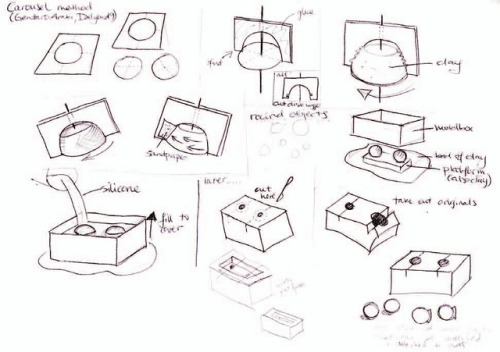 |
| http://www.flickr.com/photos/xkataniukasx/8190086485/in/photostream |
That's it. In conclusion, I would like remind how to produce joint balls for the doll's wrists and ankles. Good Luck!
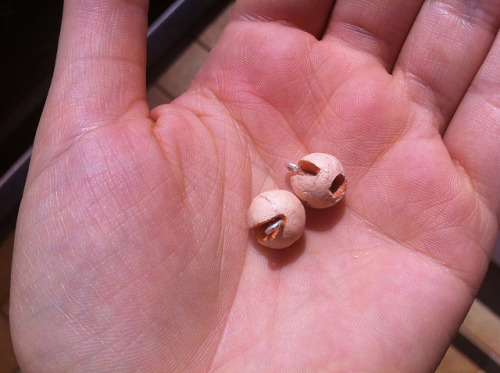



No comments:
Post a Comment